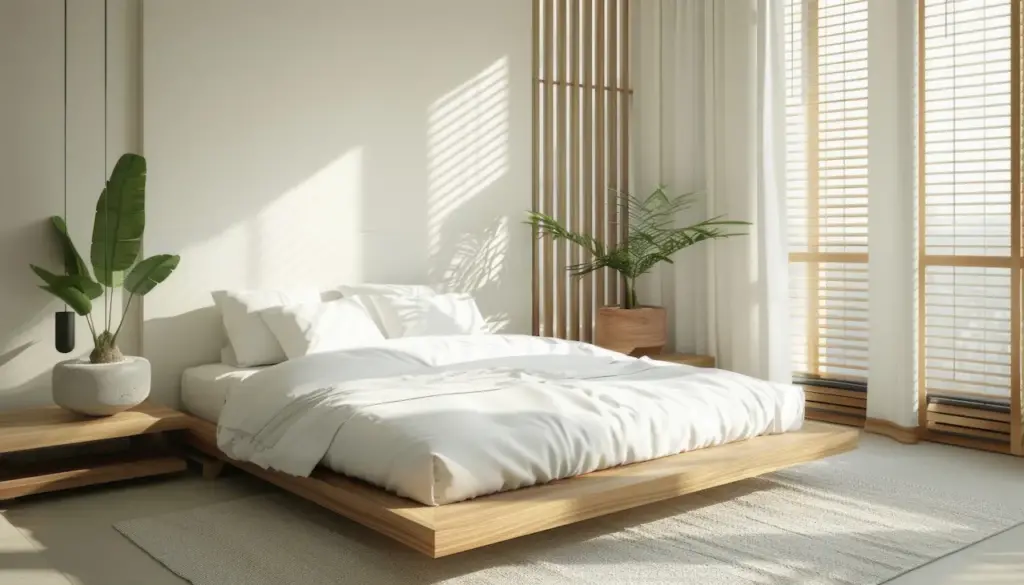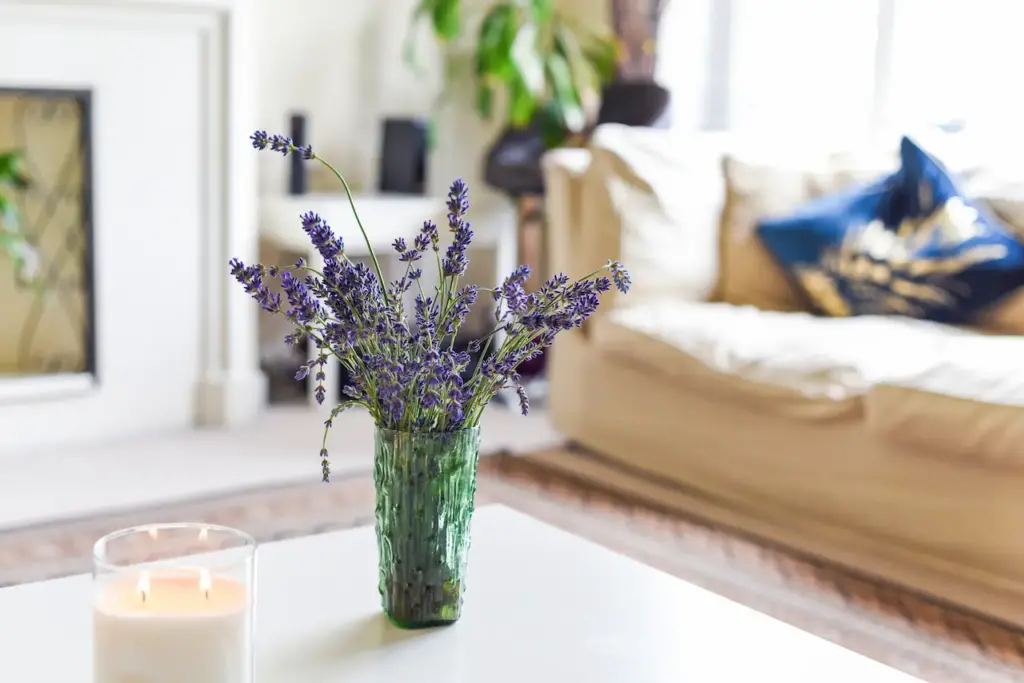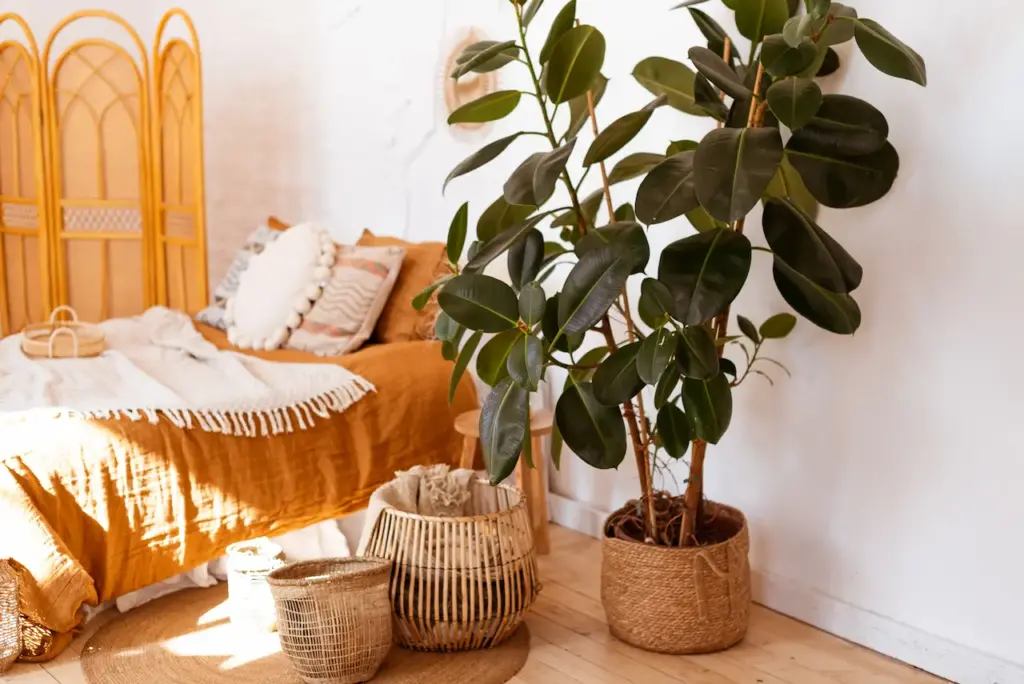The Best Bedroom Plants to Improve Air Quality
The 11 Best Bedroom Plants to Improve Air Quality and Help You Sleep
Bring the outdoors into your home! It can not only liven up your home but also help you sleep and feel better. You don’t have to be a gardening expert to grow and care for plants. And you also don’t have to fill your house with plants that need constant care.
You may already have a few small potted plants on your window sill but you might not have considered their benefits when placed in the bedroom. Here are the 11 best bedroom plants to improve air quality and help you sleep.

Benefits Of Having Indoor Plants
Indoor plants provide many benefits beyond adding colour and visual appeal to your home. Many of these health benefits can help you sleep better.
1) Reduces stress/anxiety
- According to, having plants in the hospital room can reduce systolic pressure, as well as anxiety and fatigue. It is well known that anxiety can disrupt sleep, and if unchecked, could lead to a vicious cycle of anxiety and sleep disorders.
2) Cleans the air
- A NASA study found that plants could reduce air pollution by absorbing it through their roots and converting the pollutants to new plant tissue.
- Some plant species are known for their ability to reduce specific toxins such as formaldehyde and other toxins. These toxins can be found in paint, wood and everyday items like wood.
- Some plants can also reduce seasonal allergy symptoms by removing allergens such as mould, bacteria and animal feces.
2) Increases moisture
- Water is returned to the atmosphere through transpiration during the water cycle. Water vapour can be released by plants through their leaves. The amount of water vapour that is released depends on the water-retention properties of the plant as well as the size of its leaves.
- The presence of high humidity levels in the air can prevent the spread of airborne viruses. Although the cause of this phenomenon is still unknown, increasing humidity levels can help to reduce the number of viruses that are responsible for spreading illnesses.
Flowers are a Nice Touch
Consider the following ideas to bring a variety of colours and scents to your bedroom.
1. Jasmine (Jasminum)
Jasmine’s small white flowers are easily recognized by their sweet, musky scent. Jasmine is known to promote a more restful sleep and also encourage alertness in the afternoon. The study found that jasmine is more effective than lavender at promoting a good night’s sleep. It is also a better choice because lavender is usually an outdoor plant.
The scent of jasmine can also help reduce anxiety. It is important to choose a fragrant jasmine, like Jasminum Polyanthum, as not all are.
CARE:
- Direct sunlight in springtime and summer
- Winter indirect sunlight
- Porous soil
- Keep the soil moistened with water
TIP Jasmine is not dangerous to humans or animals
2. Gardenia (Gardenia jasminoides)
The large, white flowers of gardenias have varying fragrances throughout the day. The fragrance can range from green notes and zesty notes to soft, creamy scents that resemble coconuts and peaches. It has been shown that the scent of Gardenia flowers can improve GABA movement in your body. GABA, a naturally occurring amino acid, reduces brain activity and has a calming effect. Gardenias require more attention than other plants.
CARE:
- Bright indirect light at least 4 hours per day
- High Humidity
- Water weekly

3. Lavender (Lavandula)
The fragrance of lavender flowers has been shown to reduce stress, heart rate and blood pressure. Combining lavender with bathwater was found to relax mothers and promote deep sleep for infants.
It can be difficult to grow lavender indoors. Beginners may not want to try it, but with a little care, they can. French lavender, Canary Island lavender, and fern-leaf lavender, while not as fragrant as English lavender, are better suited to indoor use.
CARE:
- Direct sunlight (or a grow-light)
- Only water when the soil is dry
TIP:
- The indoor environment is not conducive to lavender all year round.
- Animals should not be allowed to consume lavender.
4. Valerian (Valeriana officinalis)
The valerian is an excellent choice for anyone looking to add delicate pink or white flowers as a decoration and induce sleep. The flower is described as having a vanilla-like scent, but the roots and foliage are less pleasant. They have been compared with stinky feet. This would be an ideal choice for people who do not smell as well. Research confirms that valerian, despite not being recommended as a bouquet for sleep improvement, can help improve sleep by increasing GABA activity.
CARE:
- Bright indirect light or direct sunlight
- Water is used frequently
Greenery is Your go-to
If you are allergic to fragrances or you prefer the greenery provided by house plants, you can check the options listed below to see if it is a good fit for you.
5. Golden Pothos (Epipremnum aureum)
Golden pothos is also called Devil’s Ivy. It has long, leafy stems that are similar to heartleaf Philodendron. Golden pothos, while not fragrant, is known for its air-purifying properties. It is also responsible for removing toxins such as formaldehyde and carbon monoxide.
The plant is known for its resistance and can thrive even in adverse conditions. It is easy to propagate golden pothos. A 6-inch cut from a vine, which has been cleared of all leaves, should be placed in clean water and changed every week until the roots have been established.
CARE:
- Low or indirect light
- Avoid root rot by watering only when the soil is dry.
- Fertilise your plants every two months
TIP: The vines are poisonous and should not be eaten by animals or children. Use a hanging basket to keep them away from curious mouths.
6. Snake Plant (Sansevieria).
The sharpness and shape of the leaves gave the snake plant its name. The plant is known for removing toxins from the air, including xylene and formaldehyde. The snake plant, unlike other plants, produces oxygen during the night. This can help you sleep better. Snake plants, like golden pothos, are resilient and thrive even in adverse conditions.
CARE:
- Direct light
- It can survive for weeks without water.
TIP:
- Overwatering your plants can cause root rot
- Snake plants are poisonous to both humans and animals
7. Peace Lily (Spathiphyllum).
Peace lilies are a misnomer, as they’re not considered to be lilies at all. They belong to the Araceae plant family and can also absorb toxic substances from the air. Peace lilies are particularly effective at removing formaldehyde and other toxins such as benzene. They also remove alcohol, acetone, and trichloroethylene. Peace lilies can also increase ambient humidity by up to 5%. This improves sleep and makes you less susceptible to colds, flu and respiratory illness. This increase in humidity will also relieve dry skin and hair and reduce static.
CARE:
- Peace lilies don’t need a window nearby, so keep it in the shade.
- Once a week, or whenever the leaves begin to droop.
TIP Peace lilies can be poisonous for both animals and people.
8. Spider Plant (Chlorophytum comosum)
Like the golden plant, spider plants have long, slender leaves. They look best in a hanging pot, but unlike golden pothos, they are not harmful to humans or animals. Spider plants purify the air by removing benzene and formaldehyde. They also remove carbon monoxide and xylene. Once the roots are established, spider plants can be given to another plant lover.
CARE
- Indirect sunlight
- Watering regularly
TIP Spider plants should never be placed directly in sunlight as they can scorch their leaves.
9. Aloe Vera (Aloe vera)
Aloe vera is one of those plants that releases oxygen at night, according to a NASA study. Aloe vera gel can be used to soothe dry skin or bug bites. Aloe Vera is a succulent and can survive dry conditions. Some aloe plants are reported to have lived over 100 years.
CARE:
- Bright, indirect sunlight
- You can water your soil every two weeks or until it is completely dry.
TIP:
- Plant equal parts of sand and soil in a terracotta pot
- Animals are toxic to aloe vera

10. Rubber plant (Ficus elastica)
The waxy, large leaves of the rubber plant are easily identifiable. Rubber plants can remove mould spores and airborne contaminants from the air. Rubber plants have large leaves that allow them to absorb more CO2 and produce more oxygen. Rubber plants can also withstand unfavourable conditions and are a great option for those with a green thumb.
CARE:
- Bright, indirect sunlight
- In the summer, water your plants only moderately and wipe them down with a damp cloth.
TIP Rubber plant sap can irritate the skin. You must wash it off as soon as possible after exposure.
11. English Ivy
English Ivy, another vine, removes air pollutants by absorbing formaldehyde and other toxins such as benzene, toluene, and xylene. English ivy also has the added benefit of clearing the air from any animal faeces and mould spores, which can help improve allergy symptoms. The medical community has used it to treat asthma and COPD. It is a good option for allergy sufferers, as it thrives in shady areas. However, you should monitor them as they can crawl around and block the light to other plants.
CARE:
- Indirect sunlight
- Water is used frequently
TIP English ivy fruits are poisonous for both animals and humans if eaten
The conclusion of the article is:
Now that you’ve learned how plants can positively impact your physical and mental health, it’s time to visit your local greenhouse or plant sanctuary. Spend less time turning and tossing in your sleep, and more time drifting into a deep sleep to the gentle scents of a flower that induces sleep. I’m going to the local nursery next to transform my nightstand with sleep-friendly plants.




